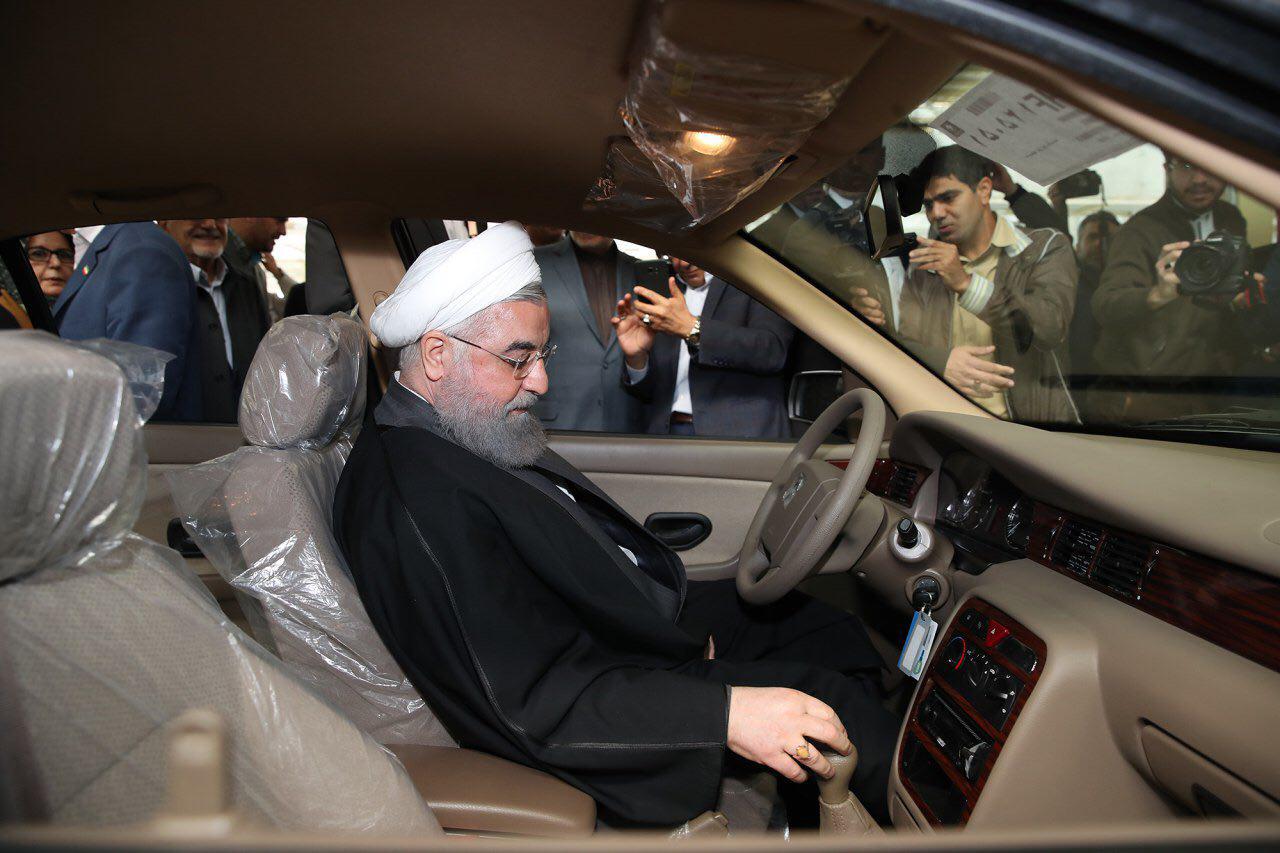Two privately-owned auto production lines — one producing Iran Khodro’s Samand and the other producing Scania minibuses — were launched on April 6 in central Semnan Province.
The government has said it is encouraging and supporting auto companies to move some of their production activities to smaller cities and towns in the country to create jobs. Unemployment, especially in the rural regions, has emerged as a source of serious concern for the Rouhani administration whose term ends next month.
Downsizing
According to an IKCO press release, President Hassan Rouhani, Industries Minister Mohammad Reza Nematzadeh and IKCO boss Hashem Yekezare were present at the Samand launching ceremony.
The model will be produced at Farda (tomorrow in Persian) Auto Factory, which is owned by private businesses.
The car plant, which formerly was owned by IKCO, was sold to a private company in 2013 as part of the behemoth's efforts to downsize, cut overheads and improve profitability.
At least 20 cars will be produced at the Farda factory everyday in the first phase of production. The factory has signed a deal with IKCO to deliver 6,000 units of the model in a one year.
Currently, IKCO produces Samand in two other factories in Karaj and Tabriz.
According to the report, 10 trillion rials ($266 million) have been invested in the Farda factory in Semnan. Although the company is owned by the private sector the report states that part of the investment has been made by IKCO, without the semi-state owned company offering any explanation about the investment.
Currently, the factory employs 150 workers and the number is slated to reach 1,500 when production at the plant is in full swing, according to the press release.
During the ceremony President Rouhani said “90% of the parts used in the production of Samand are manufactured in Iran.” Farda Auto Factory has the capacity to produce 100,000 units annually, he was quoted as saying.
The president recalled that his administration is aiming to promote industrial development in the provinces and establishing new factories is one of the means to that end.
Earlier in June 2016, IKCO launched production line of an upgraded version of Samand in Tabriz which the company says uses "IKCO low-fuel EF7" engine. It was not certain whether the Farda plant will produce the new version of Samand or the older model with the engine based on the Peugeot's 405 design.
>Scania Minibus Production
Nematzadeh inaugurated a production line at one of the plants owned by Oghab Afshan, Scania’s representative in Iran.
The new line will produce Scania minibuses. According to an official statement released by Ministry of Industries, Mining and Trade, 150 billion rials ($4 million) have been invested in the new line.
Oghab Afshan says it wants to produce 1,500 minibuses annually. Currently, 350 people work on the production line.
The company is also constructing an automated paint shop for its vehicles. The paint shop will be ready in late 2018, according to reports by the local automotive media.
According to the company officials, 1.3 trillion rials ($34.6 million) has been invested in the paint shop facility that will employ 250 people.
In addition to the minibuses, Oghab Afshan produces seven models of large Scania coaches.
The company has been expanding its presence in Iranian auto market since the nuclear agreement went to affect early last year and international sanctions were eased.
In December 2016, Oghab Afshan signed a deal with Turkey's Otokar Otomotiv ve Savunma Sanayi A., otherwise known as Otokar to buy its Navigo buses in complete-knock-down (CKD) format.
The value of the contract was $14.2 million, according to Turkish media. The initial three-year deal will see Oghab buy 500 vehicles with an option to extend the contract.


